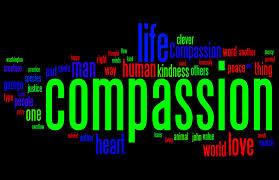 Guest post by Dr. Surendra Soni — Indian philosophical wisdom, especially in the Sāmkhya school of philosophy and the Bhagavad Gita, describes that our lives operate under the influence of an admixture of various modes of energy. We are not under the influence of the same mode of energy all the time. This varying blend of energy has an overwhelming impact as much on our relationships as it has on our actions and performance. This energy, which has a certain quality of consciousness, flows into our actions and our relationships and goes on to mould and shape them. These varying modes of energy lend charm and colour to human life and pursuit, but they also have us swing between harmonies and conflicts. The normal and complex flow of mixed energies at the ordinary human plane manifests in ever-fluctuating scenes of kindness and cruelty, activeness and indolence, love and hatred, malice and empathy, and so on.
Guest post by Dr. Surendra Soni — Indian philosophical wisdom, especially in the Sāmkhya school of philosophy and the Bhagavad Gita, describes that our lives operate under the influence of an admixture of various modes of energy. We are not under the influence of the same mode of energy all the time. This varying blend of energy has an overwhelming impact as much on our relationships as it has on our actions and performance. This energy, which has a certain quality of consciousness, flows into our actions and our relationships and goes on to mould and shape them. These varying modes of energy lend charm and colour to human life and pursuit, but they also have us swing between harmonies and conflicts. The normal and complex flow of mixed energies at the ordinary human plane manifests in ever-fluctuating scenes of kindness and cruelty, activeness and indolence, love and hatred, malice and empathy, and so on.
“Compassion is an oft-repeated word that rarely finds its way into our actual life and living.”
Understanding Compassion In The Dynamics Of Consciousness
It is important to understand compassion in dynamic consciousness perspective too. Compassion is the dimension and dynamics of consciousness beyond the normal and complex flow of mixed energies at ordinary human plane. It finds expression in looking across and beyond perspectives, viewpoints, mindsets and emotional complexes. It is able to contain and coordinate, command and lead them into novel directions of growth and development.
Compassion is true wisdom in action and association:
- ‘True wisdom’ because it rises above the constraints of the egoic self. Sees the play of the egoic self in others as well as in oneself.
- ‘True wisdom in action’ because it is not only able to contain and coordinate the force of various perspectives and viewpoints, mindsets and emotional complexes but help them emerge in higher harmonies and redirect their power into the pursuit and achievement of higher objectives.
- ‘True wisdom in association’ because it carries the power to combine and coordinate conflicting personalities into higher associations as Mandela, Gandhi, MLK Jr. were able to bring about. But with the required intensity of aspiration directed towards a higher goal it can be achieved by anyone.
The Spiritual Dimension Of Compassion:
Compassion is an oft-repeated word that rarely finds its way into our actual life and living. Unless we get to the core of this profound dimension of our consciousness it doesn’t flow in with its natural force.
- Compassion makes us feel whole and holistic.
- Malice and hatred divide, compassion connects.
- Compassion brings the feel and dimension of timelessness in the flow and rush of time.
- The way to connect and know, empathise and grow in compassion, is through the heart, the spiritual center, the center of our consciousness.
- This is the dimension where we truly connect and engage, where we truly empathise and know.
- As a relationship is brought into this dimension, true knowing beyond egoic barriers flows in, wisdom unfolds novel dimensions of growth, new opportunities build up and materialize.
“When we know how to apply the power of compassion in an organizational set-up we can see its operation as true wisdom in action and association.”
Applying The Power Of Compassion In An Organizational Setup
All human life is an integral part of some organizational set up. Even the people who seemingly don’t belong to any organization can see their lives invisibly intertwine and interact with the essentially organized human life and living. This article is an attempt to elucidate upon a compassionate attitude and outlook in a consciousness perspective and how it can help remove barriers in an in- and interorganizational functioning and mutual growth. When we know how to apply the power of compassion in an organizational setup we can see its operation as true wisdom in action and association.
“What Nadine B. Hack calls Strategic Relational Engagement (SRE™) is carrying a relationship consciously onto that high level of engagement.”
The Role Of Compassion In ‘Strategic Relational Engagement’
What Nadine B. Hack calls Strategic Relational Engagement is carrying a relationship consciously onto that high level of engagement. She herself does that by the very force of her personality and her deep involvement in that compassion and wisdom which she has known by experience with her close association with world-renowned symbols of compassionate wisdom like Nelson Mandela. She has known what it is to purge relationships of their long rootings into hatred and repugnance.
She cites the example of Nelson Mandela as ‘an archetypal engagement leader’ who in her own words, “emerged as a fervent advocate of engaging with the very people and institutions that oppressed him and others in South Africa’s movement for democracy”. Mandela’s active engagement with the very representative figures of the apartheid regime and even with people with a clear hostile intent is a lesson into how Compassion translates into Wisdom in Action and Association.
What Nadine B. Hack calls SRE should/can be understood distinctly at three distinct interactive, integrating planes in consciousness perspective. Strategy here implies a high and intense aspiration to turn an ailing relationship into a healthy, positive, productive, fruitful relationship culminating in novel opportunities.
- Unless it involves a strong will with a genuine aspiration to give a positive turn to a relationship it cannot carry compassion required to lead it from ailing and negative to healthy and positive relationship.
- There may be a strong mental will focused on the achievement of a certain goal, even a strong vital will to achieve the fulfillment of a desire but unless it carries a selfless and soulful aspiration for the good of all it cannot command compassion and the wisdom that flows from it.
- It calls for a high sense of purpose, for various stakeholders to join together into a positive and productive relationship.
“During his presidency [Mandela] not only actively disengaged himself from his old egoic self but worked compassionately to reintegrate relationships into positive engagement.”
Relational Engagement here should incorporate the three steps elaborated below:
- Disengaging with the reactionary egoic self
- Generating a Perspective of Compassion where the various conflicting sides can be objectively framed and seen
- Entering into a deep compassionate engagement working out step by step the grounds of conflict and resolving them reintegrating the relationship into a positive engagement.
All these steps can be seen implied in Mandela’s life and action after he was released from jail in 1990. His ‘engaing with the very people and institutions that oppressed him’ clearly involved the three steps distinctly enumerated above. During his Presidency he not only actively disengaged himself from his old egoic self but worked compassionately to reintegrate the relationships into positive engagement. Thus SRE, understood and applied here in retrospect, finally culminated into positively reintegrated, reorganized, result-oriented relationships.
But, as Hack says, “We can learn a lot from Mandela, but it’s defeatist to think you must be extraordinary like him to try to be an engagement leader.” In her wonderful TEDx talk, “Turning Adversaries to Allies”, she outlines four core components for engagement leadership, based on compassion:
- Be honest and clear about what you actually expect of yourself and others;
- Go beyond territorial positions and see the larger picture instead of just your own view;
- Offer ongoing nurturing as engaged relationships require consistent effort; and
- Reveal your humanity as it’s always so liberating and, ultimately is what connects all of us.
The honesty and clarity with which we proceed, the intensity with which we go beyond egoic viewpoints and perspectives, the care and concern that we bring to bear upon the nurturance of our relationships bring out the best that is purely humane in us and as Nadine puts it “connects all of us”.
“[T]he alchemy of compassion in its inherent wisdom transforms our individual and organizational energies into actions and associations forged into their most fruitful forms.”
In its essential wisdom, the Bhagavad Gita exhorts us to proceed in all our relationships:
● without malice and hatred
● without egoism, I-ness and my-ness
● with patience and forgiveness
● with love and compassion.
What this wisdom aims to make us familiar with is the dimension and dynamics of consciousness where all hurdles and barriers of our inner personal nature, as well as those in inter-relational dynamics are surpassed and novel associations, harmonies and synergies are generated and built up to make momentous achievements. This is how the alchemy of compassion in its inherent wisdom transforms our ordinary individual and organizational energies into actions and associations forged into their finest and most fruitful forms.
——-
Dr. Surendra Soni, a teacher and researcher, studied at Vikram University. This article was originally published on Huffington Post.

